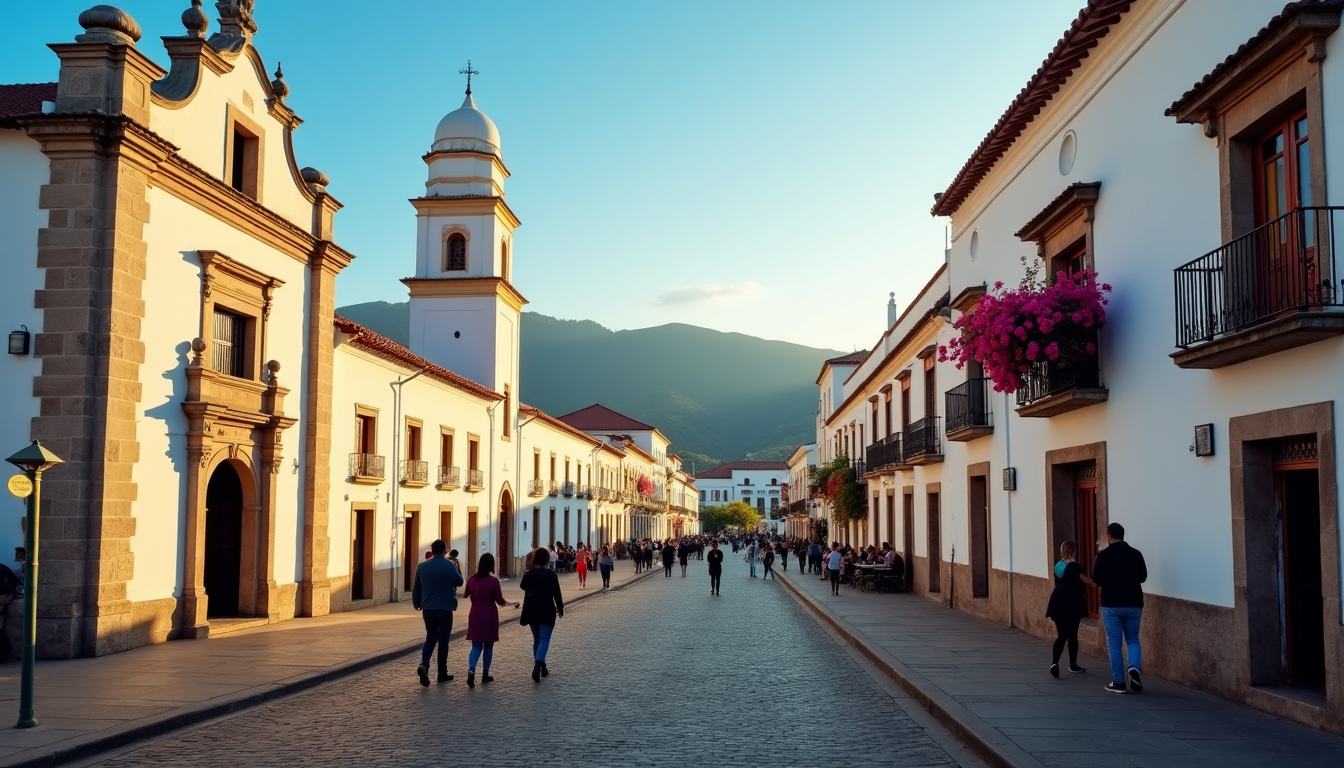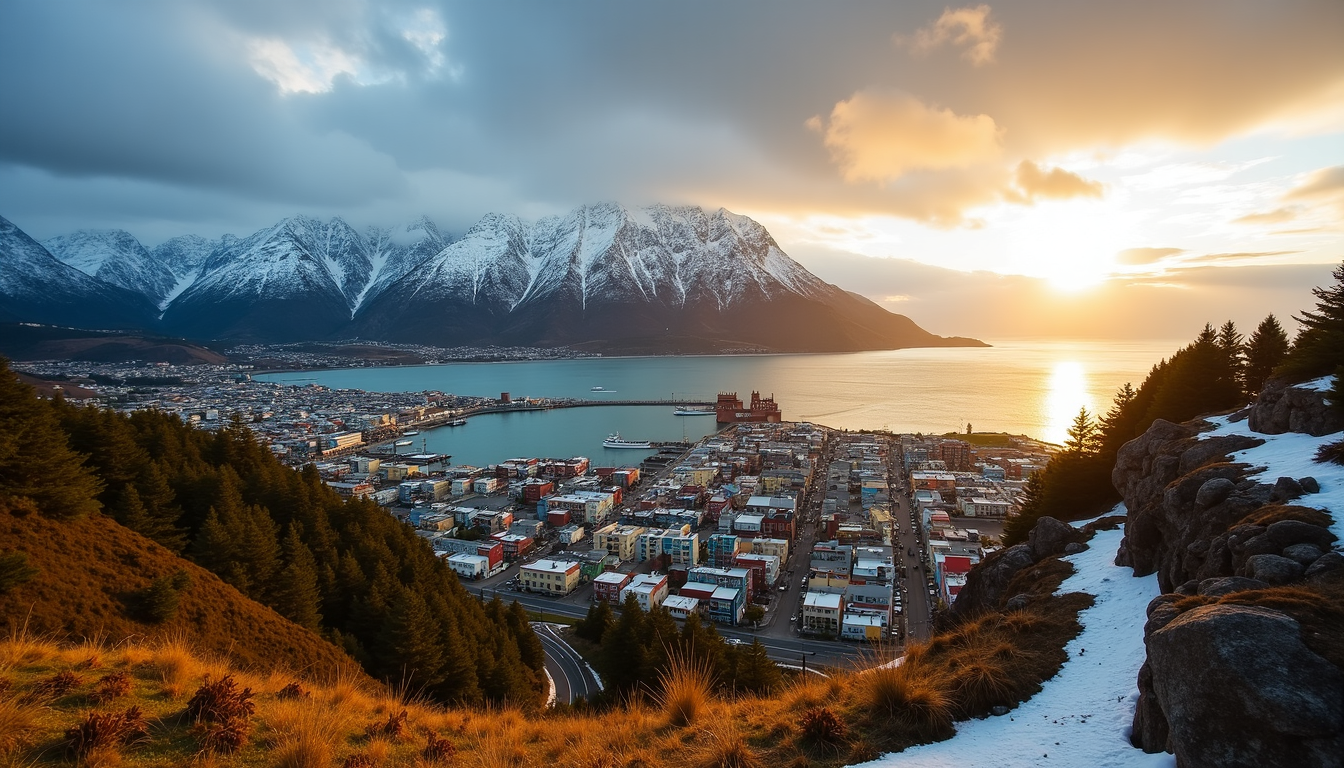17 Best Things to Do in Uyuni: Salt Flats Magic in 2025
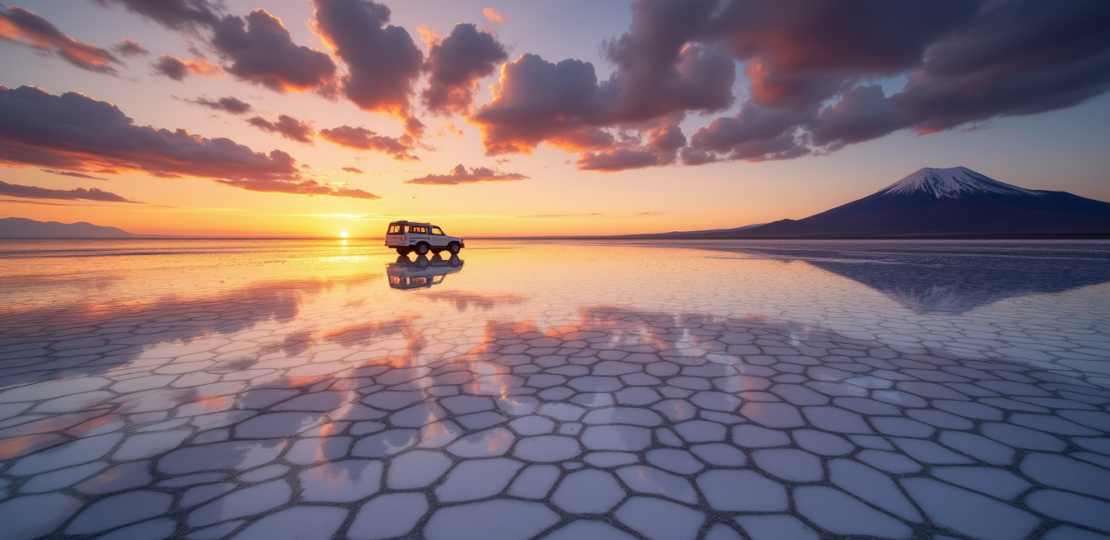
Picture yourself standing in the middle of Bolivia’s Salar de Uyuni – the world’s largest salt flat that spans 4,000 square miles. After exploring countless activities here, I can tell you the stunning white landscape is just the start of what awaits you.
The salt flats draw more than 24,000 visitors yearly, but they’re so much more than vast white plains. The rainy season from December to April turns this natural wonder into the world’s biggest mirror, perfect for capturing surreal photos. The surrounding Eduardo Avaroa National Andean Wildlife Reserve paints a different picture with its rust-colored lagoons, steaming geysers, and ancient cacti dotting Incahuasi Island. When darkness falls, Uyuni’s clear skies become a stargazer’s paradise.
I’ve created this detailed guide to help you find the most amazing experiences this Bolivian gem has in store for 2025. Let’s take a closer look at every fascinating corner of this one-of-a-kind destination together.
Explore the Magnificent Salar de Uyuni Salt Flats

Image Source: Salar De Uyuni
Salar de Uyuni has two main tour options to explore this big salt desert. The one-day tour runs from 10 AM to 5 PM and covers spots like the Train Cemetery and Colchani salt production site. The popular three-day tour gives you a more extensive experience with overnight stays in unique salt hotels and visits to colored lagoons.
Your photography goals will determine the best time to visit. The rainy season from December to April turns the salt flats into nature’s largest mirror. This period attracts the biggest crowds who want to capture reflection photos. August to November gives you guaranteed sunny days with spectacular sunsets if you prefer warmer weather and crystallized salt patterns.
My experience as a photographer shows that the salt flats’ beauty needs specific techniques to capture. The flat horizon creates unique viewpoint opportunities – objects near the camera look larger than distant ones. You’ll get better results by placing your camera on the ground instead of holding it, especially for viewpoint shots. The salt flats become a stunning mirror that reflects daytime landscapes and nighttime stars during the wet season.
| Tour Type | Duration | Key Features |
|---|---|---|
| Day Tour | 7 hours | Salt flats, Train Cemetery |
| Extended Tour | 3-4 days | Salt hotels, Colored lagoons, Hot springs |
Night photography enthusiasts will find unique views of the Milky Way here, thanks to minimal light pollution and thin atmosphere. Note that you’ll need a tripod and fast wide-angle lens to capture these celestial wonders.
Visit the Historic Train Cemetery
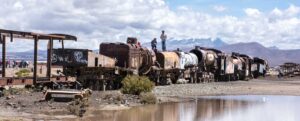
Image Source: Salar De Uyuni
The Train Cemetery sits on Uyuni’s outskirts and serves as a haunting reminder of Bolivia’s industrial past. This unique site features British trains from the early 20th century and tells a compelling story of ambition and decline.
Train Cemetery History
Uyuni became a vital transportation hub for South America’s mining industry in the late 19th century. The railway era in Bolivia started when the first train arrived on November 20, 1890. The mining industry collapsed in the 1940s, and Bolivia lost its coastal access during the War of the Pacific. These events led these mighty steam engines to their final rest.
Best Photo Spots
The cemetery features over 100 train cars that create amazing photography opportunities. The harsh salt winds have created eerily beautiful weathering patterns on the metal structures. You can capture the best shots at these times:
| Time of Day | Lighting Conditions | Crowd Level |
|---|---|---|
| Before 8 AM | Soft morning glow | Minimal |
| After 5 PM | Golden hour light | Less crowded |
Train Cemetery Access Tips
You’ll find the site about 3,000 meters above sea level, just 10 minutes from Uyuni’s center. Salt flat tours are popular, but you can also reach the cemetery by:
- Local combi bus (budget-friendly option)
- Private taxi (30-minute wait arrangement)
- Walking (30-minute trip from town center)
Bring hand gloves to protect against rusty surfaces. A flashlight helps during sunset visits. The site stays available year-round, with April and October offering the best weather conditions.
Discover Incahuasi Island’s Giant Cacti

Image Source: Salar De Uyuni
Incahuasi Island rises majestically from the endless white expanse in the heart of Salar de Uyuni. This ancient volcanic outcrop, named “house of the Inca” in Quechua, reveals an incredible story of geological transformation.
Notable Features
The island’s foundation consists of coral remnants from a prehistoric lake that existed 40,000 years ago. Giant cacti of the Trichocereus species dominate the landscape. These remarkable plants grow just one centimeter each year and can tower up to 10 meters high. Some of these magnificent specimens have lived for more than 1,200 years, creating a dramatic contrast with the stark white salt flats that surround them.
Hiking Trails
A clear path meanders through this natural wonder toward the island’s peak. Visitors can reach the summit in about 15 minutes and enjoy sweeping views of the salt flats below. The island creates long shadows across the salar at sunrise, painting the landscape in brilliant colors.
Visitor Facilities
The island provides several amenities to enhance your visit:
| Visitor Service | Details |
|---|---|
| Entrance Fee | 30 Bs for foreigners, 5 Bs for locals |
| Restaurant | Mongo’s café serving local cuisine |
| Parking Area | Available for tour vehicles |
Sturdy footwear makes your visit more comfortable and safe. The reception center welcomes visitors during daylight hours, though staying overnight isn’t allowed. Tour operators typically schedule stops at Incahuasi Island as a perfect spot to break for lunch and take photos.
Experience Sunrise at Sol de Mañana Geysers

Image Source: Antipode Peru
Sol de Mañana’s geothermal field sits at 4,921 meters and extends through southwestern Bolivia’s volcanic terrain.
Geyser Field Overview
This geothermal wonderland covers 10 square kilometers and features active volcanic displays through fumaroles, mud pools, and hot springs. The steam shoots up to 200 meters high and creates an almost alien landscape. The field’s temperature swings between extremes – fumaroles heat up to 70°C while hot springs stay around 30°C.
Safety Precautions
Keeping your distance from these natural features is vital. You need to watch your step around the thin crust near geysers because boiling mud underneath can be dangerous. The combination of high altitude and sulfur fumes means you should limit your visit to 20 minutes.
| Season | Temperature Range |
|---|---|
| Summer | 0°C to 5°C |
| Winter | -5°C to -20°C |
Best Viewing Times
The geysers show their best activity during three main periods:
- Sunrise: The best time to watch as morning sun lights up the steam columns
- Midday: Great for taking vibrant photos
- Late Afternoon: The unique light makes for amazing views, though winds can be strong
The geothermal field is part of the Eduardo Avaroa Andean Fauna National Reserve. You can reach it with a 30-minute drive from Laguna Colorada. Most 3-day Salar de Uyuni tours stop here and provide guides to help you explore this amazing natural wonder.
Relax in Polques Hot Springs
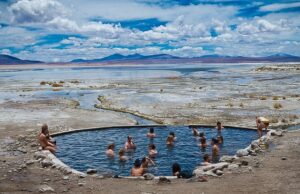
Image Source: Pinterest
The Polques Hot Springs sit at 4,406 meters above sea level in the dramatic Bolivian Altiplano landscape.
Hot Springs Features
The nearby Polques Volcano’s geologic activity creates these mineral-rich waters that stay at a pleasant 29°C. Visitors can watch flamingos wade through a beautiful lagoon while llamas and vicunas wander in the surrounding wilderness. The waters’ high mineral content helps people with arthritis and rheumatism symptoms.
Admission and Facilities
You’ll find these budget-friendly rates:
| Service | Cost (Bolivianos) |
|---|---|
| Hot Springs Access | 10 |
| Changing Rooms | 5 |
| Towel Rental | 10-20 |
The facilities are simple but get the job done. You’ll find changing rooms next to the pools with all the needed amenities. There’s a restaurant that serves local food, but most people bring their own snacks and drinks.
Best Times to Visit
Tour groups fill the springs from 8 AM to 2 PM. The magic happens at sunrise or after the sun sets. Night visits give you a chance to stargaze while you soak in the warm water, since there’s hardly any light pollution. The temperature drops to -5°C or -10°C, which makes the warm springs feel even better.
Marvel at Laguna Colorada

Image Source: Intrepid Travel
Laguna Colorada stretches across 6,000 hectares in Eduardo Avaroa Andean Fauna National Reserve. The lake’s blood-red waters and white borax islands engage visitors.
Flamingo Spotting
This shallow salt lake is home to three of the world’s six flamingo species. You can find the rare James’s Flamingo here, which scientists thought extinct until 1956. The lake’s rich plankton draws these magnificent birds along with Chilean and Andean flamingos.
| Flamingo Species | Characteristics |
|---|---|
| James’s Flamingo | Most common, native to Altiplano |
| Chilean Flamingo | Larger size, vibrant coloring |
| Andean Flamingo | Rare, high-altitude adapted |
Photography Opportunities
Red sediments and algae pigmentation give the lake its crimson waters, creating stunning photo opportunities. The water appears most vibrantly red just before sunset. The volcanic warm waters create misty scenes that make unique shots early in the morning.
Access Information
The lake sits at 14,000 feet above sea level in Bolivia’s southwestern altiplano near the Chilean border [65, 69]. Visitors typically reach the lake through tours from Uyuni that include Eduardo Avaroa National Park permits. The lagoon’s colors become more intense during the rainy season from December to April, attracting more flamingos. The dry season brings clearer skies and stable weather conditions for viewing.
Explore Laguna Verde

Image Source: Salar De Uyuni
Laguna Verde displays its mesmerizing emerald waters at 4,310 meters elevation beneath the towering Licancabur volcano in Bolivia’s Eduardo Avaroa National Reserve [79, 72].
Laguna Verde Highlights
The lake’s striking green color comes from its unique mineral composition. We discovered lead, sulfur, arsenic, and calcium carbonates among other minerals in its waters. The water temperature fluctuates between 13-20°C, which creates an otherworldly atmosphere. A narrow causeway splits the 7.5-square-kilometer lake with its 5.4-meter depth from its twin, Laguna Blanca.
Viewing Points
The lake’s western and southern shores offer spectacular views. Visitors can experience different views throughout the day:
| Time of Day | Conditions | Color Intensity |
|---|---|---|
| Morning | Clear skies | Turquoise |
| Midday | Windy | Dark emerald |
| Evening | Calm | Tranquil green |
Tour Options
Multi-day Salar de Uyuni excursions provide the main access to Laguna Verde. Travelers can reach the lake fastest by flying to Uyuni airport and taking private transportation. The area attracts about 30,000 visitors each year. April through September offers the best visiting conditions. Warm clothing becomes essential as temperatures can drop below 0°C.
UV radiation at the lake measures 40% higher than at sea level, creating Mars-like conditions. These extraordinary features make Laguna Verde one of Bolivia’s most important tourism destinations.
Visit the Siloli Desert

Image Source: Salar De Uyuni
The Siloli Desert sits 4,500 meters above sea level, making it one of the world’s highest deserts where earth and sky seem to merge into one.
Desert Landscapes
Magnificent volcanoes tower over the desert, which features remarkable rock formations shaped by powerful winds that reach 120 kilometers per hour. Sandy and gravel roads snake through these wind-sculpted rocks, creating a landscape that looks almost otherworldly. A striking colored volcano dominates the western horizon, adding drama to the desert’s already spectacular views.
Wildlife Spotting
This harsh-looking environment is home to a surprising variety of wildlife. Visitors can spot:
- Llamas and vicuñas as they graze on scattered vegetation
- Andean geese that glide through the thin air
- Culpeos (Andean foxes) roaming their territory
- Flamingos gathering near scattered desert lagoons
Tour Information
Uyuni serves as the main gateway for desert exploration through guided tours. These trips typically last three to four days and are a great way to get a complete view of the region’s best features. Here’s what you need to know:
| Tour Feature | Details |
|---|---|
| Duration | 3-4 days |
| Best Season | April-October |
| Highlights | Rock formations, wildlife viewing, lagoons |
| Stargazing | Zero light pollution |
The vast open spaces create a sense of solitude that’s rare in today’s world. Local guides know the best spots for wildlife watching, so let your driver know if you’re interested in animal sightings.
Photograph the Stone Tree

Image Source: Salar De Uyuni
The Árbol de Piedra (Stone Tree) stands 5 meters tall in Bolivia’s Siloli Desert. This natural masterpiece shows what wind erosion can create.
Stone Tree Formation
Wind erosion shaped this remarkable monument over thousands of years. The rock’s tree-like shape comes from sand particles carried by strong winds that sculpt its surface. A quartz base erodes faster than its iron-rich top, which withstands the weather better.
Photography Tips
The Stone Tree’s unique shape creates amazing photo opportunities throughout the day. Here’s the best time to snap pictures:
| Time | Lighting | Crowd Level |
|---|---|---|
| Early Morning | Soft, warm | Minimal |
| Sunset | Golden hour | Moderate |
| Night | Starlit | Low |
The surrounding landscape adds depth to your compositions. You’ll get better shots by placing your camera low to the ground, which highlights the formation’s height. The structure’s delicate balance means climbing isn’t allowed.
Access Details
The Stone Tree sits in Eduardo Avaroa Andean Fauna National Reserve, 4,575 meters above sea level and 200 kilometers from Uyuni. Most visitors see this site through 3-4 day hosted tours. The site stays available year-round, and photographers get their best shots during April and October.
Stay in a Salt Hotel

Image Source: www.lunasaladahotel.com.bo
Salt hotels near Salar de Uyuni offer extraordinary accommodations made from local salt blocks.
Salt Hotel Options
Luna Salada Hotel’s walls, furniture, and floors showcase complete salt construction. Palacio de Sal, located 25 kilometers from Uyuni, proudly stands as the world’s first salt hotel. Hotel de Sal Atipax adds to these luxury choices with its modern salt block design and 4-star amenities.
Room Amenities
Each property delivers impressive comfort to its guests. Luna Salada’s rooms come with soundproof walls, plush bedding, and stunning views of the salt flats. The accommodations include:
| Amenity | Details |
|---|---|
| Basic Features | Private bathroom, heating, WiFi |
| Safety | Laptop safe, 24-hour front desk |
| Dining | On-site restaurants, room service |
| Special Services | Airport transfers, tour planning |
Booking Information
Guests should book well in advance, especially during peak seasons. Room prices vary by season and view type, and most properties include free parking and breakfast. Location affects accessibility – Luna Salada sits right at the salt flats’ edge, while guests need private transportation from Uyuni airport to reach Palacio de Sal.
The properties maintain heating systems to combat nighttime temperature drops. Traditional Bolivian textiles blend with modern amenities, creating spaces that go together with the surrounding salt desert’s beauty.
Take Perspective Photos on Salt Flats

Image Source: Bolivia Hop
Salar de Uyuni’s salt flats let you create amazing optical illusions through perspective photography. The endless, level surface gives photographers a perfect canvas to capture creative shots.
Photo Setup Tips
Your position is vital for perspective shots that work. The photographer should lie on their stomach and keep the camera as close to the ground as possible. Place your closest subject within arm’s reach, while the second subject moves back until you get the right scale. These perspective tricks look best when distant objects seem to float above the ground instead of touching it.
Best Times for Photos
Weather and seasons affect your shooting schedule:
| Season | Conditions | Photo Style |
|---|---|---|
| Dry (April-October) | Clear skies | Perspective illusions |
| Wet (December-March) | Water coverage | Mirror reflections |
We noticed the best shots come from early morning and late evening light that creates soft, warm tones with long shadows. Watch out for shadows in your shots – they can give away your perspective tricks.
Equipment Recommendations
A solid tripod is a must, especially when you have long exposure shots. Night photography fans should pack a fast wide-angle lens with F2 aperture – it helps capture 30-second exposures without star trails. Polarizing filters are a great way to get better colors and cut glare on reflective surfaces.
Small props around 30 centimeters tall help create the best effects. The salt’s bright surface needs careful handling – try underexposing slightly to avoid blown-out highlights.
Visit Local Salt Mining Operations

Image Source: Salar De Uyuni
Bolivia’s largest salt-processing cooperative operates from the heart of Colchani village. This small community of 600 people runs the country’s main salt processing operations that transform raw minerals from Salar de Uyuni into refined products.
Mining Process
Miners start their day at 4 AM and head to the salt plains. Workers break through the salt crust to reach brine water and shape salt into drying mounds. The cooperative uses small machines to process table salt among other traditional harvesting methods. Salt refinement follows these steps:
- Drying salt in specialized ovens
- Adding iodine for consumption
- Milling the mixture
- Packaging for distribution
Cultural Significance
For generations, Uyuni’s indigenous Aymara people have harvested salt while wearing wooden masks to protect their eyes from the harsh sunlight. The region’s economic focus has changed all the same. Many miners like Nico now create salt sculptures for tourists instead of gathering salt the traditional way.
| Time Period | Primary Activity |
|---|---|
| Historical | Salt trading with llama caravans |
| Present | Tourism and artisanal products |
Tour Options
Local workers at Colchani demonstrate their traditional salt processing methods to visitors. The cooperative’s refinery welcomes tourists with free guided tours, and visitors often support the community through donations. Tours take you through:
- Traditional salt workshops
- Local salt museum
- Artisanal craft shops
The region produces about 25,000 tons of salt each year, and Brazil receives most of these exports. The world’s largest lithium reserve lies beneath the salt crust, with 11.2 million tons of this valuable mineral.
Explore Valle de Rocas

Image Source: Salar De Uyuni
Valle de Rocas stretches across a 10-mile expanse in Eduardo Avaroa National Reserve. Nature’s artistic prowess shines through its extraordinary rock formations.
Rock Formation Highlights
The valley’s iconic Árbol de Piedra stands among many captivating formations. Wind erosion and volcanic activity have shaped these rocks over centuries. Striking red and orange hues paint the rocks, creating a landscape that looks like Mars. Visitors can spot unique shapes that resemble the World Cup trophy, camels, hands, and fish.
Hiking Possibilities
Nature’s playground unfolds through multiple winding trails in the valley. A 5-mile loop trail reveals this geological wonder’s hidden corners. Hikers often encounter rich wildlife in the area:
- Vicuñas grazing among the formations
- Foxes in their natural habitat
- Chinchillas darting between rocks
Guided Tours
Valle de Rocas features in most 3 and 4-day Salar de Uyuni excursions. The valley’s location in Eduardo Avaroa National Reserve means guides must accompany visitors. Rock climbing enthusiasts will find designated formations suitable for adventure.
| Tour Duration | Features |
|---|---|
| 3 Days | Simple valley exploration |
| 4 Days | Extended hiking options |
Coca leaves and altitude sickness medication help visitors cope with the high elevation that affects many travelers. The valley’s surreal landscape provides panoramic views of the Siloli desert, creating perfect photography moments.
Watch Sunset Over Salt Flats

Image Source: Bolivian Life
The sky bursts into shades of violet and pink as daylight fades over Salar de Uyuni. This natural spectacle creates one of South America’s most breathtaking sunset displays.
Best Viewing Spots
The wet season turns the salt flats into nature’s biggest mirror where sky meets earth in perfect harmony. Local guides take visitors to shallow water pools that reflect everything with crystal clarity and create an infinity mirror effect. Visitors can sip Bolivian wine while the sun sinks behind the white horizon.
Photography Tips
Getting the perfect sunset shot needs special techniques. A thin layer of water mirrors the colorful sky and creates twin images that blend earth and heaven. Here’s what you need for the best shots:
| Time | Lighting Conditions | Special Effects |
|---|---|---|
| Early Evening | Soft Light | Mirror Reflections |
| Sunset Peak | Violet-Pink Sky | Horizon Blur |
| Post-Sunset | Star Visibility | Night Sky Mirror |
Timing Guidelines
Tours leave in late afternoon and return between 8-9 PM. The rainy season from January through March gives you the best mirror effects among other spectacular views. Most guides suggest arriving 30 minutes before sunset so you can watch the colors change. Cloud cover is rare here but adds drama by painting unique patterns in the sky.
Magic happens as the day’s final rays paint the salt desert in reds, oranges, and yellows. Light spreads across sky and ground like a watercolor painting, creating an unforgettable display.
Stargaze on the Salt Desert

Image Source: Ruta Verde Tours
Salar de Uyuni becomes nature’s most spectacular planetarium after sunset, sitting majestically at 3,656 meters above sea level.
Star Viewing Locations
The salt flat gives visitors a unique stargazing experience. The area’s clean air, dark skies, and vast open spaces create ideal conditions for viewing the stars. The experience gets even better during the rainy season from December to May. A thin layer of water creates a mirror effect that reflects the night sky, making you feel like you’re floating through space.
Night Photography Tips
You’ll need specific equipment and settings to capture the stunning celestial display. A full-frame camera works best to improve ISO capabilities. The essential photography gear includes:
| Equipment | Settings |
|---|---|
| Tripod | 15-25 second exposure |
| Wide-angle lens | f/2.8 aperture |
| Cable release | ISO 1600 |
Tour Options
The area offers two main stargazing packages. The sunset-with-stargazing tour lasts about 6 hours and leaves at 15:30. The sunrise-with-stargazing option starts at 03:30 in summer and 04:00 in winter. Both packages come with private 4×4 transport, oxygen tubes, snacks, and drinks.
You can see the Milky Way, Saturn, and Jupiter clearly in the night sky. The best viewing happens during the new moon phase when there’s minimal cloud cover. You’ll need warm clothes since temperatures can drop below freezing. The rainy season offers the most magical experience – the water-covered salt flat mirrors the cosmos, creating a double display of millions of stars above and below.
Shop at Colchani Salt Markets

Image Source: Salar De Uyuni
Colchani’s bustling market streets show off Bolivia’s rich artisanal heritage just beyond the salt flats’ edge. This tiny village has only 600 residents and serves as the gateway to Salar de Uyuni’s traditional salt trade.
Local Crafts
Local artisans create beautiful handicrafts from llama and alpaca wool. Market stalls burst with vibrant textiles that tell stories of Andean craftsmanship. Artists also make unique salt sculptures that turn this mineral into decorative masterpieces.
Salt Products
Bolivia’s largest salt-processing cooperative brings an amazing array of salt-based products to the market. The salt museum shows visitors the fascinating process from raw mineral to finished product. The selection has:
| Product Type | Description |
|---|---|
| Cooking Salt | Coarse grain, hand-mined |
| Salt Crafts | Carved llamas, camels |
| Crystal Minerals | Decorative pieces |
Shopping Tips
Most vendors take cash only, and traditional bargaining adds a genuine touch to your shopping. Early morning visits give you the best selection with fewer crowds. Here’s how to make authentic purchases:
- Talk to artisans about their craft
- Try local snacks while you browse
- Help support the salt museum with donations
The market’s friendly atmosphere lets visitors connect with local craftspeople in a rich cultural exchange. Bright colors mix with traditional music and the smell of local food to create an unforgettable experience.
Visit Tunupa Volcano

Image Source: Tripadvisor
Tunupa Volcano stands majestically at the northern edge of Salar de Uyuni. This impressive peak reaches 5,432 meters above sea level and holds deep sacred significance in Andean culture.
Volcano Features
The volcano was active during the Pleistocene era and took shape between 1.36 to 1.56 million years ago. It towers 1.8 kilometers above the surrounding landscape. The summit shows signs of extensive hydrothermal alterations. Several lava domes scatter across its eastern flank. These features combine to create a complex volcanic structure that rules over the terrain.
Hiking Options
Hikers can choose between two viewpoints with different challenge levels:
| Trail Section | Duration | Elevation Gain |
|---|---|---|
| First Lookout | 2 hours | 400m |
| Second Lookout | 3-4 hours | 750m |
The outlook point at 5,152 meters rewards climbers with sweeping views that stretch to Sajama volcano and the entire Salar de Uyuni. The mountain’s slopes buzz with unexpected wildlife, especially hummingbirds, vizcachas, and camelids.
Safety Guidelines
A safe climb needs proper preparation. Pack gloves, hats, sunscreen, and sunglasses. High altitude conditions demand warm, quality clothing and spare camera batteries. The trek remains available to many visitors, with wheelchair-friendly transport options to certain areas.
Volcanic ash enriches the mountain’s slopes and supports a remarkably diverse ecosystem. This sacred peak, which local people worship as the deity of thunder and lightning, gives visitors a chance to experience both cultural heritage and natural beauty while exploring Salar de Uyuni.
Comparison Table
| Attraction | Location/Elevation | Best Time to Visit | Key Features | Tour Duration/Access |
|---|---|---|---|---|
| Salar de Uyuni Salt Flats | 4,000 sq miles | Dec-Apr (mirror effect), Aug-Nov (dry) | World’s largest salt flat with stunning mirror effect during rainy season | 1-day or 3-day tours |
| Train Cemetery | 3,000m, 10 mins from Uyuni | Apr-Oct | Over 100 abandoned British trains showcase industrial heritage | 30-min visit, easy walk/taxi ride |
| Incahuasi Island | Center of salt flats | Daytime hours | Majestic giant cacti reaching 10m, ancient 1,200-year-old plants | 15-min hiking trail |
| Sol de Mañana Geysers | 4,921m | Sunrise | Powerful steam bursts up to 200m, temperatures reach 70°C | 20-min recommended visit |
| Polques Hot Springs | 4,406m | Evening/sunset | Relaxing 29°C thermal waters with flamingo sightings | Tour groups welcome |
| Laguna Colorada | 14,000 ft | Dec-Apr (peak season) | Stunning red waters home to three flamingo species | Multi-day tour stop |
| Laguna Verde | 4,310m | Apr-Sep | Beautiful emerald waters rich in minerals | Multi-day excursions |
| Siloli Desert | 4,500m | Apr-Oct | Nature-sculpted rocks teeming with wildlife | 3-4 day tours |
| Stone Tree | 4,575m | Early morning/sunset | Remarkable 5m wind-carved rock formation | Part of 3-4 day tours |
| Salt Hotels | 25km from Uyuni | Year-round | Unique architecture with salt block walls and furniture | Overnight stays |
| Photo Opportunities | Salt flats | Dry season (Apr-Oct), Wet season (Dec-Mar) | Creative optical illusions, mirror reflections | Regular tour feature |
| Salt Mining Operations | Colchani village | Year-round | Traditional salt processing yields 25,000 tons annually | Free guided tours |
| Valle de Rocas | Within Eduardo Avaroa Reserve | Not mentioned | Spectacular 10-mile rock formation valley | 3-4 day tours |
| Sunset Viewing | Salt flats | Rainy season (Jan-Mar) for reflections | Mesmerizing mirror effects and color displays | Evening tours (8-9 PM) |
| Stargazing | 3,656m | New moon phases | Pristine skies with minimal light pollution | 6-hour evening tours |
| Colchani Salt Markets | Edge of salt flats | Early morning | Local crafts and salt products | Regular access |
| Tunupa Volcano | 5,432m | Not mentioned | Revered mountain offering multiple viewpoints | 2-4 hour hike |
Conclusion
Salar de Uyuni is evidence of how nature knows how to create extraordinary landscapes. My extensive exploration of this Bolivian wonder helped me find that there was countless magical moments. I watched flamingos wade through crimson waters at Laguna Colorada and gazed at stars beneath pristine night skies that reflected endlessly across mirror-like salt flats.
The attractions here tell unique stories. Ancient cacti rise from Incahuasi Island while steam pours from Sol de Mañana’s geysers. People built ingenious salt hotels that turn mineral blocks into comfortable shelters. Local communities still process salt just like their ancestors did centuries ago.
My trip through Uyuni’s attractions showed me this place offers much more than just salt flats. Visitors can immerse themselves in an environment unlike anywhere else on Earth. They can take creative photos, hike volcanoes, and relax in thermal springs. These seventeen experiences are the best ways to explore this remarkable corner of Bolivia. Every sunrise brings new adventures and each sunset paints the white expanse in extraordinary colors.
RELATED POSTS
View all
